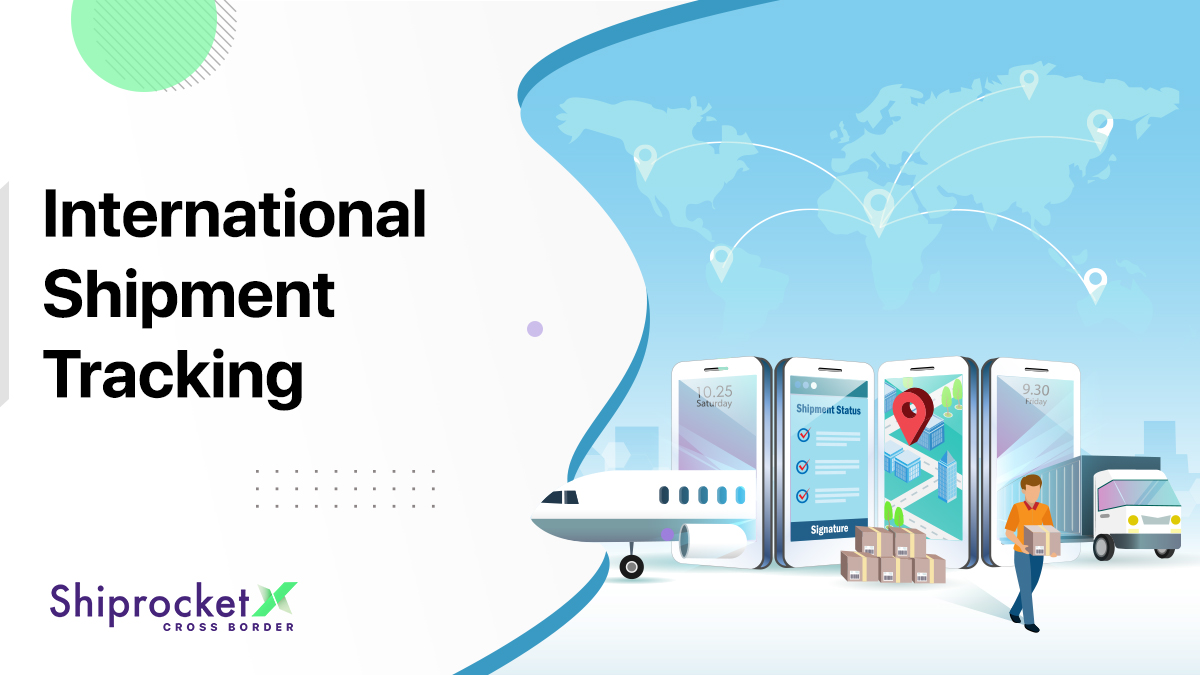How to Create a Shipping Policy on Shopify: Step-by-Step
- Understanding the Importance of a Shipping Policy
- Preparing to Create Your Shipping Policy on Shopify
- Step-by-Step Guide to Creating a Shipping Policy on Shopify
- Value-Adding Insights
- Optimizing Your Shipping Policy for SEO and Engagement
- Frequently Asked Questions
- What is the best way to set shipping rates on Shopify?
- How do I handle international shipping on Shopify?
- Can I offer free shipping on Shopify?
- How do I integrate advanced shipping features into my Shopify store?
- What additional elements should be included in my shipping policy?
- How can I ensure my shipping policy remains updated and accurate?
- Conclusion
E-commerce continues to surge as businesses strive to create frictionless customer experiences. In today’s competitive market, a well-crafted shipping policy not only builds consumer trust but also minimizes cart abandonment and ensures operational efficiency. This guide delves into the process of creating a shipping policy on Shopify, sharing industry insights, real-life examples, and data-powered best practices that empower your business to scale with confidence. Whether you’re a small startup or a growing SME, establishing clear shipping guidelines is critical to optimizing your logistics and bolstering customer satisfaction.
Understanding the Importance of a Shipping Policy
A well-defined shipping policy serves as the backbone for customer trust. It sets clear expectations among consumers by detailing shipping rates, delivery timelines, and return guidelines. Transparent policies foster a more secure shopping environment and alleviate potential confusion. According to recent industry research, nearly 70% of consumers value clear shipping policies when assessing an online store. By investing the time to create a comprehensive shipping policy on Shopify, you not only build trust but also reduce abandoned carts significantly.
-
Builds Trust: Detailed shipping steps and transparent cost structures make online shoppers feel more secure. For instance, businesses that highlight shipping timeframes and potential delays see a noticeable increase in customer retention.
-
Reduces Abandonment: When customers are aware of the exact shipping fees and timelines, they feel more confident about their purchase. This clear communication reduces hesitation at the checkout stage.
-
Enhances Customer Experience: A clearly articulated shipping policy leads to elevated customer satisfaction, fostering loyalty and repeat business.
Key elements of an effective shipping policy include:
-
Detailed shipping rates and fees
-
Well-defined delivery times and available options
-
Clear return and exchange protocols
-
Comprehensive international shipping information
Preparing to Create Your Shipping Policy on Shopify
Prior preparation is crucial before diving into Shopify’s shipping settings. Start by collating all relevant data and setting clear, actionable objectives. This involves determining not only your shipping rates but also identifying the optimal shipping methods that align with your specific business model.
-
Gathering Information: Evaluate different charging models – whether flat rates, weight-based, or price-dependent. For example, a recent case study by a mid-sized retailer indicated that a hybrid model combining flat rates with price-based thresholds increased average order value by 15% over a six-month period. Additionally, map out both your domestic and international shipping zones.
-
Setting Objectives: Your shipping policy should mirror your overall business strategy. Alongside ensuring compliance with regional legal standards, it must address customer expectations while remaining scalable as your business expands. Consider integrating real-time analytics to continuously refine your shipping processes based on customer feedback and sales data.
Step-by-Step Guide to Creating a Shipping Policy on Shopify
Below is a detailed, step-by-step guide to configuring an effective shipping policy on Shopify, complete with actionable insights and practical examples that illustrate best practices.
Accessing Shopify Shipping Settings
The first step is to access your Shopify admin dashboard. Navigate to Settings and then click on Shipping and delivery. Here, you will have full control to customize your shipping configurations, ensuring they align with both your customer’s needs and your logistical operations.
Creating Shipping Zones
Segment your markets by creating distinct shipping zones. This not only enhances clarity but also allows you to customize shipping rates according to geographic relevance. For example, you might differentiate between urban and rural delivery areas or even different international regions based on logistics partners and local regulations. An efficient practice is to analyze historical order data to define zones that require specific rate adjustments or promotional free shipping offers.
Setting Shipping Rates
Determining the right shipping rate strategy is key to balancing customer satisfaction and cost-effectiveness. Consider the following methods:
-
Flat Rates: Implement a consistent fee regardless of the order size to provide predictability, particularly effective for heavy or bulky items.
-
Weight-Based Rates: Adjust costs according to the total order weight, ensuring that heavier orders contribute proportionally to shipping expenses. A retailer using weight-based pricing noted a 20% decrease in shipping-related complaints once customers were accustomed to the rates.
-
Price-Based Rates: Base shipping costs on the order value, which may encourage larger orders if free shipping thresholds are set. For example, offering free shipping on orders exceeding a specific value can incentivize customers to increase their basket size.
Leverage a mixed approach to best match your business needs. For instance, offering free shipping above a certain order value could drive higher average order values, building a positive loop of customer trust and operational efficiency. Highlight these benefits with data-powered results and case studies to further advocate for your chosen method.
Configuring Shipping Methods
Outline the variety of delivery options available to your customers. Decide whether to offer standard, expedited, or free shipping based on factors like order size and geographic location. In scenarios where customers require faster delivery, clearly explain the expedited shipping options along with associated fees. For example, many e-commerce businesses have reported improved satisfaction scores when they offered a same-day delivery option in urban regions.
Integrate advanced features where applicable. Automation tools that provide real-time tracking and seamless integration with your e-commerce platform can reduce manual errors and boost efficiency. Consider leveraging Shiprocket’s capabilities, such as its Unified Shipping Aggregation Platform, which connects you with 25+ courier partners across 24,000+ pin codes both domestically and internationally. Moreover, advanced features like Shiprocket Quick bring together local delivery partners to make local deliveries both affordable and reliable.
Testing, Finalizing, and Publishing Your Shipping Policy
Before making your shipping policy public, rigorously test all configurations. Solicit feedback from a small group of users or employees to ensure the policy is clear and accurate. Adjust as needed based on these insights. Once you are confident in the functionality and clarity of your shipping policy, publish it on your Shopify site. A well-organized policy page bolsters customer trust and positions your brand as an authority in streamlined, tech-powered logistics.
Value-Adding Insights
A clear shipping policy can significantly boost repeat business. Not only does it protect your business from logistical challenges, but it also serves as a strategic tool to optimize shipping costs and streamline delivery processes. For instance, a notable online retailer reported a 25% reduction in shipping disputes after overhauling their shipping policy to integrate automated tracking solutions and transparent rate structures.
In addition to basic shipping details, consider offering add-on features that deliver extra value. Shiprocket’s Instant COD feature is a standout example; it enhances cash flow by remitting 70% of the COD amount within just 24 hours, a stark contrast to traditional methods taking up to 7-10 days. Such innovations not only improve operational efficiency but also demonstrate your commitment to supporting business growth through technology and streamlined processes.
Optimizing Your Shipping Policy for SEO and Engagement
For your shipping policy to stand out in crowded search results, it must balance comprehensive information with SEO best practices. Throughout this guide, keywords like shopify shipping policy setup, create shipping rules shopify, and shopify shipping settings have been seamlessly integrated. These keywords, along with detailed descriptions of rates and zones, ensure your policy is discoverable and helps drive organic traffic.
Enhance your content with data-driven insights by incorporating proven case studies and highlighting the tangible benefits of a streamlined shipping policy. Make use of tables or bulleted lists to break down complex procedures into digestible information. For example, you can create a table that contrasts shipping costs under different scenarios (flat, weight-based, and price-based) to assist customers in understanding the nuances of each rate structure.
Frequently Asked Questions
What is the best way to set shipping rates on Shopify?
Effective rate setting on Shopify requires balancing business costs with customer expectations. Considerations include the nature of your products, market demand, and order value. Employing a blend of flat, weight-based, and price-based rates can yield the best results. For example, many brands have seen success by setting a free shipping threshold, thus encouraging larger orders.
How do I handle international shipping on Shopify?
International shipping often involves complex logistics including customs, fees, and regulatory requirements. Segmenting shipping zones by region and providing detailed instructions for international deliveries can mitigate potential issues. It is essential to clearly communicate estimated delivery times, additional fees, and any necessary documentation to your international customers.
Can I offer free shipping on Shopify?
Absolutely. Free shipping is a powerful incentive that can drive higher order volumes and enhance customer loyalty. However, be sure to define a minimum order value to maintain profitability while still offering this attractive option.
How do I integrate advanced shipping features into my Shopify store?
Utilize integration tools that support real-time tracking, multi-courier options, and automated shipping management. Tools like Shiprocket’s comprehensive platform allow you to combine multiple shipping methods, ensuring your logistics remain efficient and scalable.
What additional elements should be included in my shipping policy?
Beyond shipping rates and delivery options, include information on return and exchange protocols, handling times, and any unique features like Instant COD. Sharing success stories or case studies where these policies improved customer satisfaction can further strengthen your policy’s value proposition.
How can I ensure my shipping policy remains updated and accurate?
Regularly review your shipping data and customer feedback. Consider integrating analytics tools to monitor delivery performance and adapt your policy as needed. Scheduled updates in sync with new market trends or changes in courier partnerships can ensure your policy remains relevant.
Conclusion
In summary, a well-crafted Shopify shipping policy is crucial for streamlining logistics, building customer trust, and ultimately driving business growth. By following a detailed, step-by-step process—from evaluating shipping zones and rate strategies to embracing innovative tools like Shiprocket’s Instant COD and hyperlocal delivery services—you empower your business to navigate the complexities of e-commerce seamlessly. Take actionable steps to tailor your shipping arrangements to your specific operational needs, and enjoy the long-term benefits of reduced cart abandonment and enhanced customer satisfaction.







